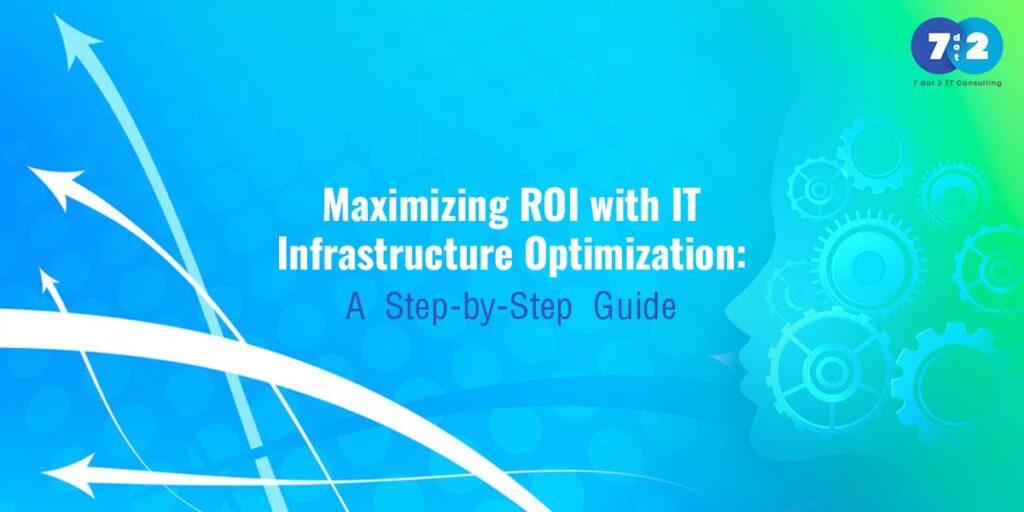Maximizing ROI with IT Infrastructure Optimization: A Step-by-Step Guide
Posted on : 16 November 2024 at 10:31 am, by Puneet Aggarwal, Founder 7 dot 2 IT Consulting

Introduction
Today, an efficient IT infrastructure is the backbone of modern businesses, directly influencing both operational performance and financial outcomes. By strategically optimizing IT infrastructure, organizations can maximize their return on investment (ROI), streamline operations, and maintain a competitive edge while driving growth and innovation. Here’s a step-by-step guide to achieving this goal.
1. Assess Current Infrastructure
A comprehensive evaluation of existing hardware, software, and network components is the foundation of IT optimization. Identify bottlenecks, redundancies, and outdated systems to uncover areas for improvement. This assessment ensures resources are allocated effectively and aligned with organizational needs.
2. Leverage Cloud Computing
Adopting cloud technologies offers unparalleled scalability and cost-efficiency. Migrate workloads to the cloud to reduce capital expenditure while gaining flexibility. Optimize cloud usage by monitoring resource allocation, eliminating waste, and ensuring cost-effective scalability in the organization.

3. Automate Repetitive Processes
Automation is a game-changer for operational efficiency. Streamline tasks such as system provisioning, backups, and updates using automation tools. This reduces manual intervention, minimizes errors, and enhances productivity, allowing IT teams to focus on strategic initiatives.
4. Consolidate and Standardize IT Infrastructure
Reduce complexity by consolidating servers and applications onto fewer platforms. Standardization simplifies management, cuts costs, and improves interoperability, making IT systems more agile and adaptable.

5. Optimize Network Performance
Analyse network traffic to identify inefficiencies and implement optimization techniques such as load balancing and improved bandwidth utilization. These measures enhance data flow, reduce latency, and ensure a seamless user experience.
6. Monitor and Adapt for Performance
Deploy advanced monitoring tools to track key performance indicators (KPIs), including system uptime and response times. Regular performance evaluations allow timely adjustments to resource allocation, capacity planning, and scaling, ensuring infrastructure remains agile.

7. Prioritize Security and Cost Management
Robust security measures are essential to protect sensitive data and minimize the risk of costly breaches or downtime. Additionally, conduct regular reviews of IT expenses to identify savings opportunities, such as renegotiating vendor contracts or reallocating resources efficiently.
8. Aligning IT Strategy with Business Goals
A successful IT optimization plan is not just a technical measure but strategic requirement. Ensure that infrastructure improvements directly support organizational objectives, such as enhancing customer satisfaction, increasing efficiency, or driving revenue growth. This alignment amplifies ROI by tying technological advancements to measurable business outcomes.

Conclusion
In today’s fast-paced digital landscape, optimizing IT infrastructure is more than just a cost-saving measure; it’s a strategic investment in an organization’s future. By assessing current systems, embracing cloud computing, automating workflows, and prioritizing performance and security, businesses can create a resilient and efficient IT ecosystem.
Aligning these initiatives with overarching business goals ensures that IT serves as a powerful enabler of growth, innovation, and sustained profitability. With the right strategies, businesses can unlock the full potential of their IT infrastructure, achieving both operational excellence and financial returns.
